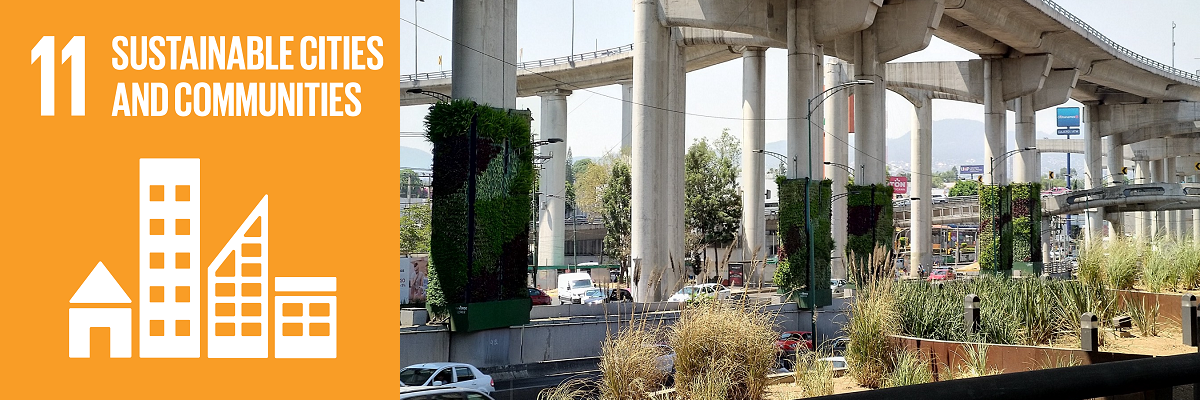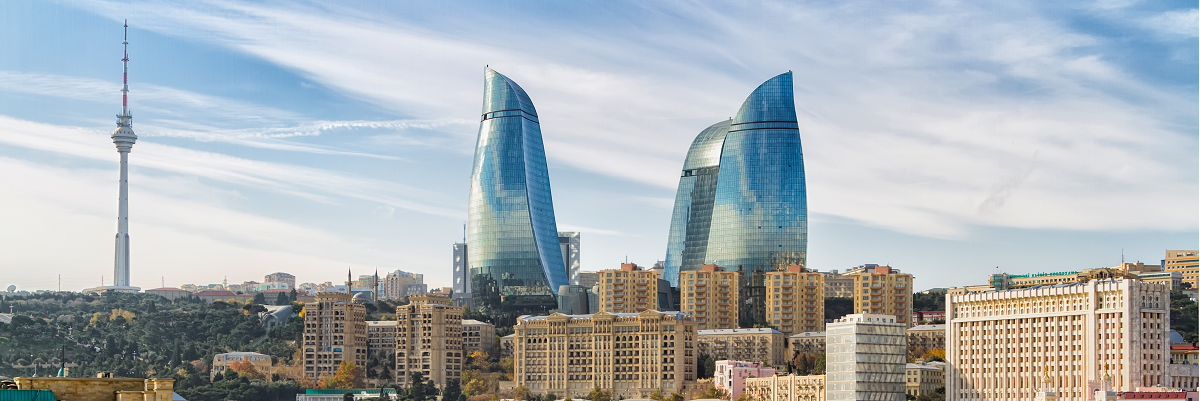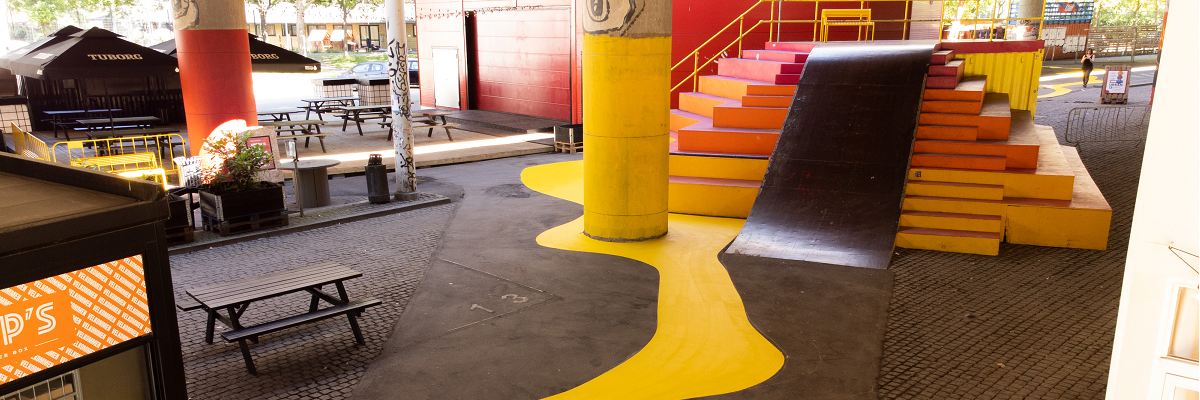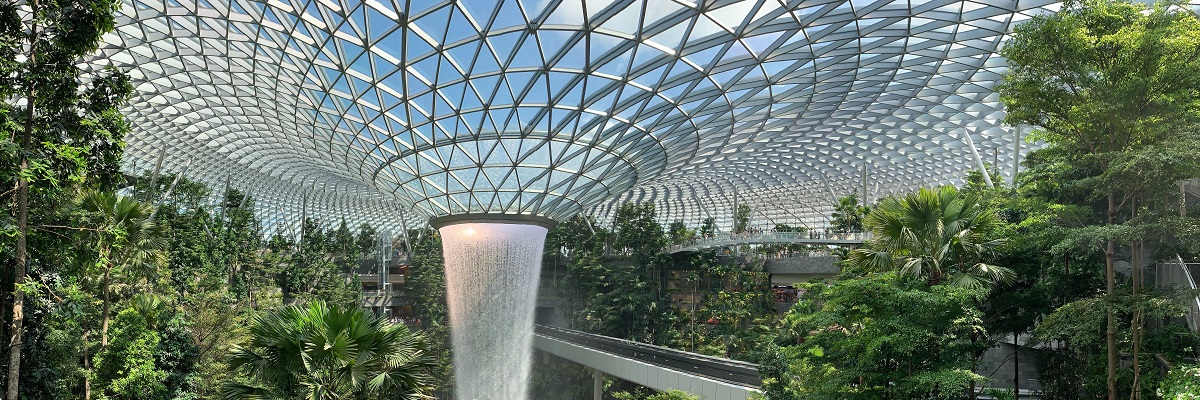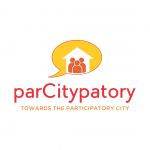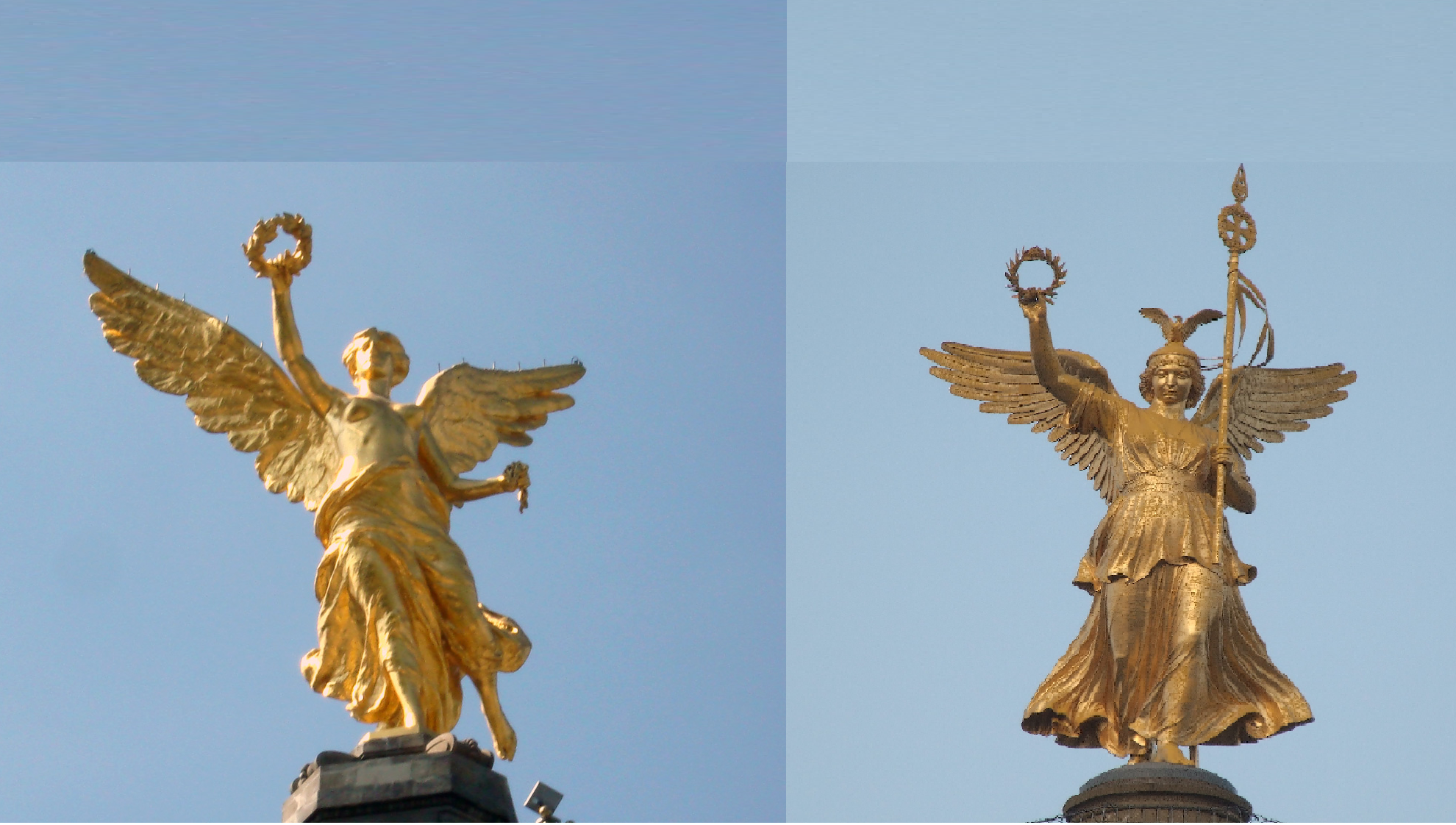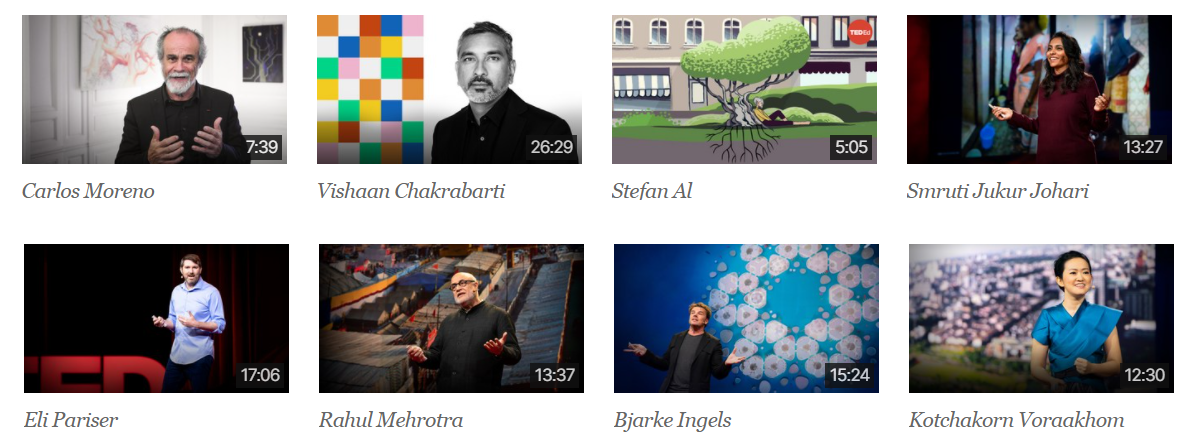You might already have guessed the answer: Projects like the Via Verde may draw international attention but do little to alleviate or even prevent the actual problem.
More than 22 million people live in the metropolitan region of Mexico’s capital, Mexico City. This makes it the largest city in the Western hemisphere. Air pollution and traffic congestion are only some of the city’s problems: strong earthquakes, water scarcity and simultaneous sinking and flooding are other challenges. At the same time, Mexico City has recently acquired a reputation as a model for sustainable and green solutions. Let’s have a look at the challenges of traffic and air pollution as well as solutions in Mexico City.
4 million cars congest the city on a daily basis. The double- and triple-layered streets are usually covered by smog, despite surrounding parks and countless green spaces. Vehicles are responsible for 75% of air pollution in the city with the worst air quality in the Western hemisphere. Despite attempts like banning industry from the capital since the 1990s and only allowing cars to circulate on certain days, there are still many days when the PM 10 indicator tells Mexicans that air in the capital is dangerously toxic.
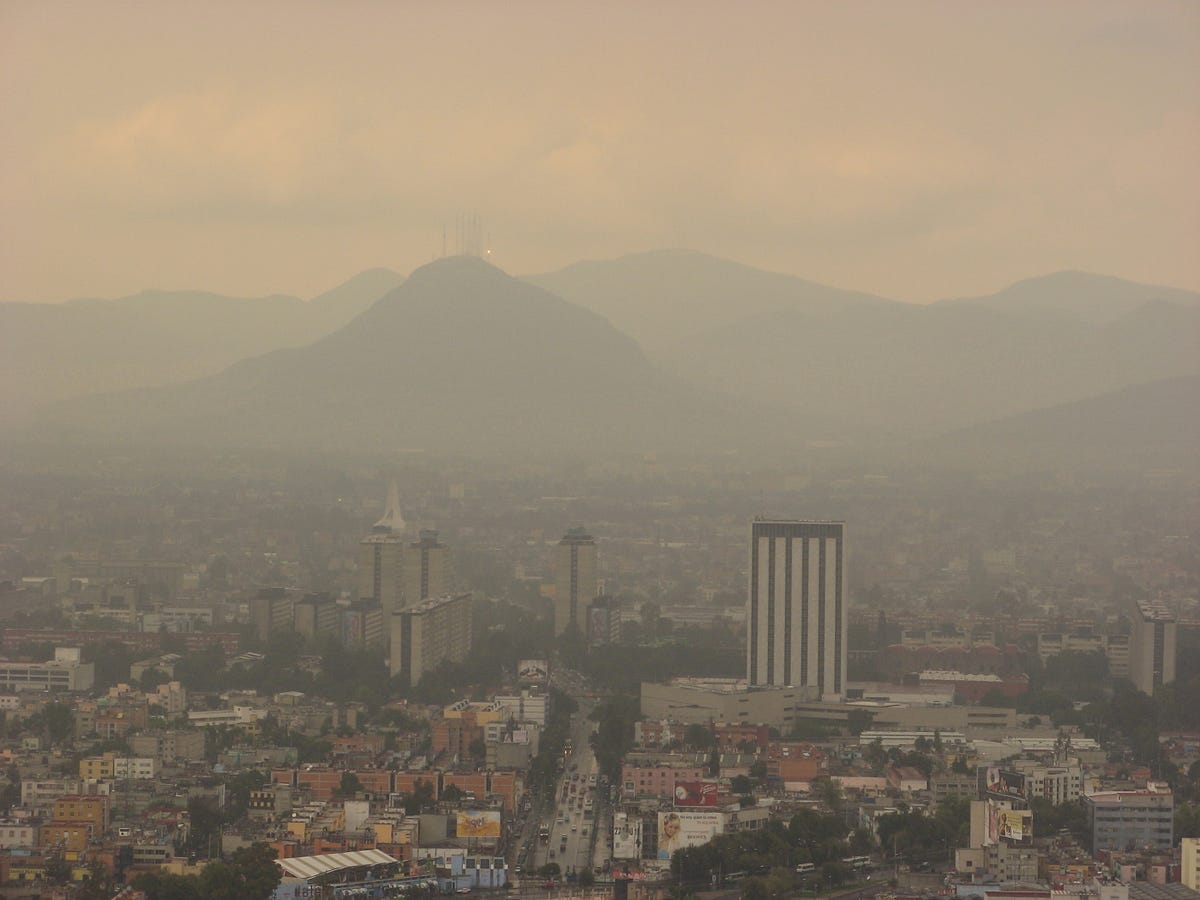
If you happen to be in Mexico City during Christmas, Easter or other holidays, you will see how 164 cars leave the city every minute, which results in an immediate improvement of air quality. This means that “less cars“ is the perfect solution. Sadly, Mexico City mainly invests in fighting the consequences of air pollution, rather than stifling it from the beginning — as do countless other cities.
Current attempts to solve Mexico City’s respiratory challenges
Colourful bicycles are for rent by many providers in city centre. Cheap prices invite you to give them a try. Ecobici, the largest provider, has about 500 docks in Mexico City. Tourists, but also commuters use bikes for the last mile in transport. Every Sunday, the largest boulevard in Mexico City (La Reforma) becomes a car-free zone and thus a paradise for pedestrians and bikers.
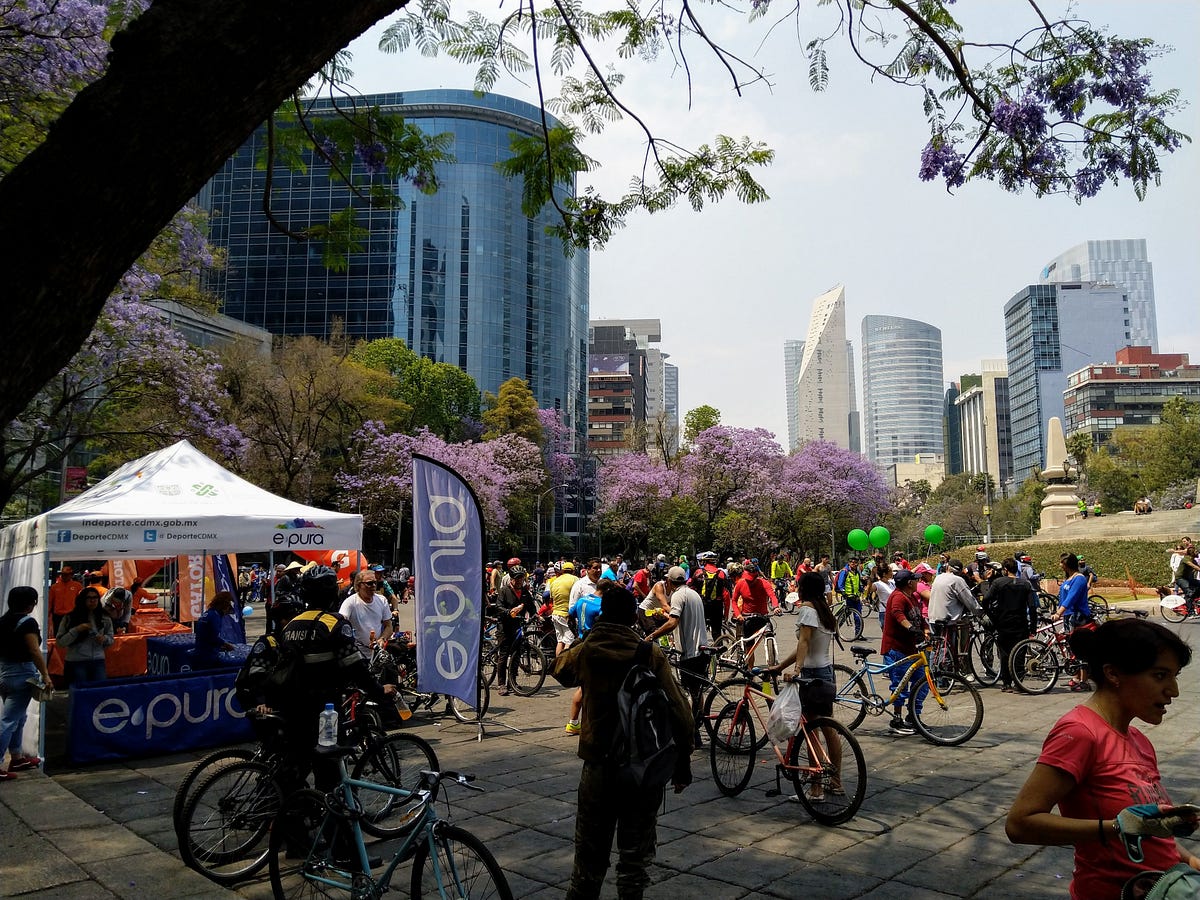
Public transport like the heavily used metro, the quick metro buses and the regular buses are being subsidised by the Mexican Government. They are very cheap — a metro ride only costs about 20 cents. As long as you do not leave the underground network, you can go as far as possible with one ticket. Interestingly, the signs for metro station in Mexico City are particularly innovative, as well: Every stop has a symbol as well as a name, in order to accommodate less literate people.
Despite these efforts to make public transport accessible and affordable, many of those who need it most cannot use the metro’s 12 lines, since they do not reach the poorer areas of Mexico City yet. The same problem holds true for the metro bus (Bus Rapid Transit, BRT). This bus system was pioneered in Latin America and means that one lane on the streets is exclusively used by buses. While this works better than taking a car, metro buses get incredibly crowded during rush hour in Mexico City. This means that many locals take a car or an Uber, whenever possible.
Aside from these attempts to reduce traffic and improve public transport accessibility, Mexico City is also investing in its green spaces. More and more parks (see this article on the revival of a former asphalt plan in Mexico City) are being created. Existing parks get thorough clean-ups and are being kept in shape by armies of workers in neon colours. Even roofs and walls turn into gardens in this dense city.
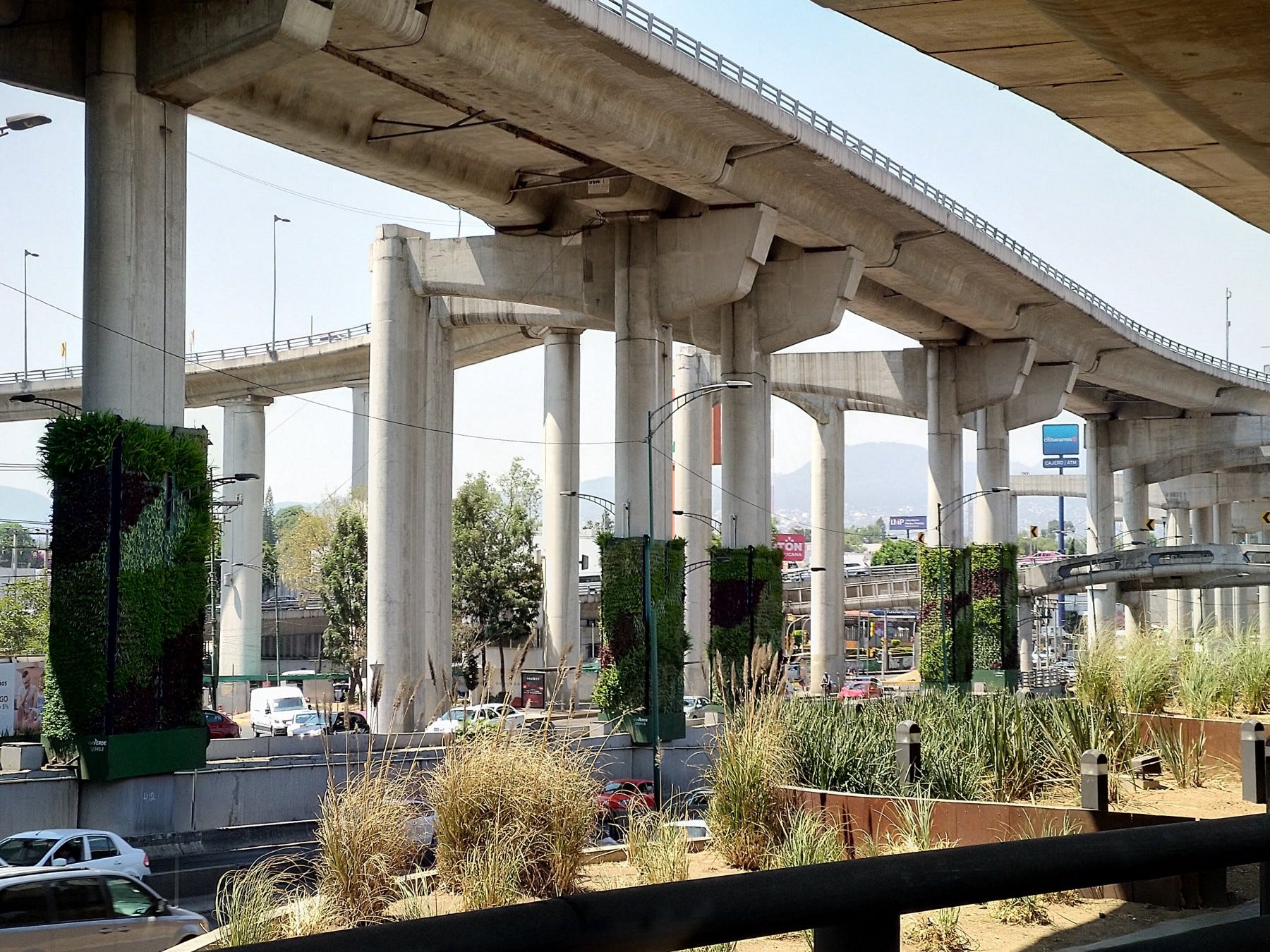
Recently, the Via Verde has brought international attention. This “green street” runs parallel to one of the main traffic veins of Mexico City, which is called periférico. The pillars along this street, which support the second and third levels of street, are now being decorated with vertical gardens — a true concrete jungle!
The project idea came from citizens, who started a change.org petition. Due to the wide-spread support for the project, the government decided to support the Via Verde back in 2016. Thus, the Via Verde is actually a good example of bottom-up governance. At the same time, government support in Mexico City is usually problematic due to corruption and disappearing funds.
Against all odds, Via Verde got started. So far, about 50 pillars have been greened. This makes it the largest vertical garden project in the world. More than 1,000 pillars will be greened in the next years — the equivalent of 60,000 m² green space. The plants will filter toxic substance and provide oxygen for Thousands every day. An innovative drip irrigation system based on rain and grey water as well as the use of recycled materials make these gardens a best practice example of sustainability. What is more, the plant species have been carefully chosen to filter large amounts of CO2 efficiently.
However, you will only be able to admire the green pillars for short seconds, if traffic on periférico is moving as it should. At the same time, Via Verde’s architect, Fernando Ortiz Monasterio of Verde Vertical, hopes that this project will not only have health and environmental, but also psychological benefits: Drivers will smile at the green space and feel less stressed, according to him.

While some benefits are definitely there, this project is not part of public space, since pedestrians cannot access it. You can only see and “enjoy” the Via Verde by driving past it, which is almost ironic: It is the source of a problem looking at a band-aid-style solution and enjoying it.
The vast majority of Mexico City’s inhabitants will not benefit from this project. Air quality is only improving around the pillars (and only for a couple of thousand of the city’s millions of inhabitants), and the actual problem, the number of cars, is not being tackled. On top of that, greening one pillar of Via Verde might be as expensive as planting 300 new trees. Therefore, Via Verde is mostly an attempt to beautify the city and gloss over the source problems.
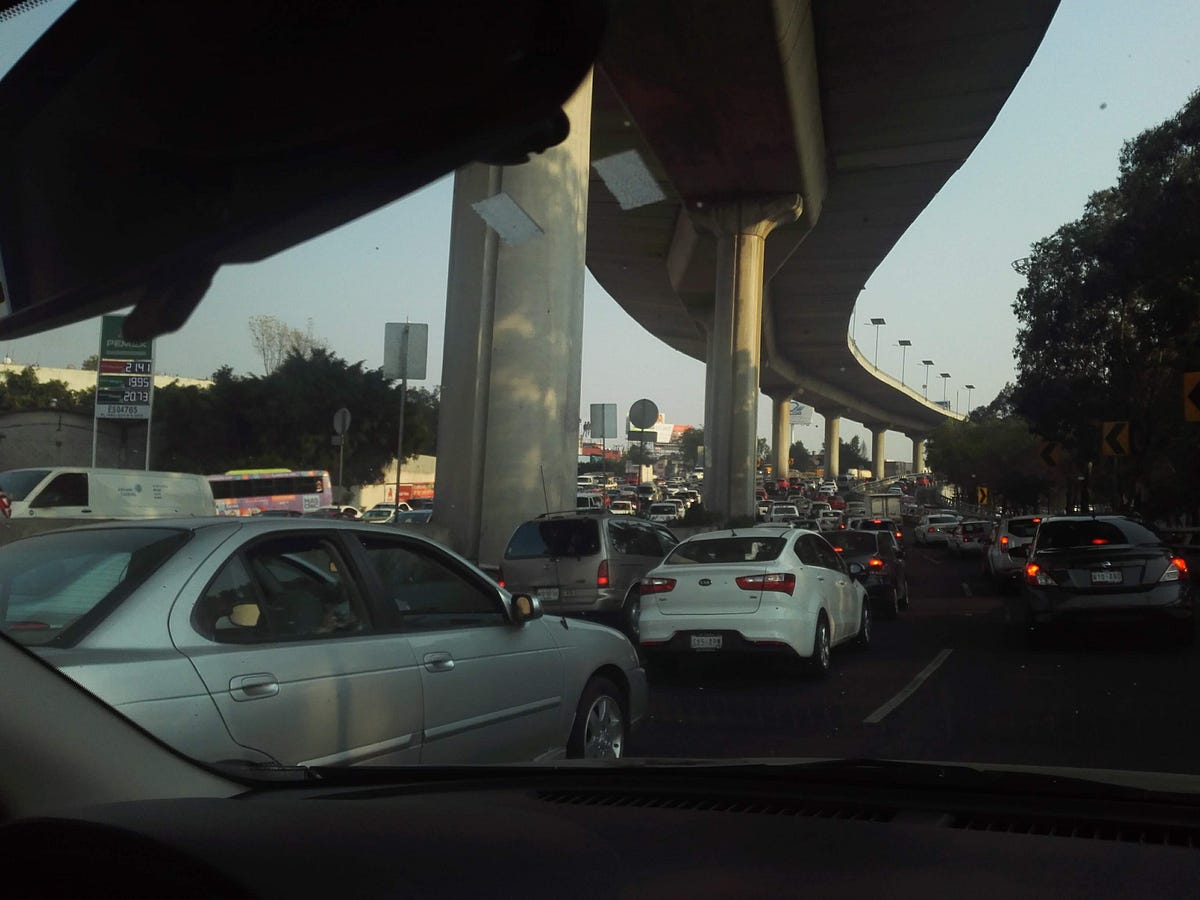
Still, this particular initiative to green Mexico City has been attracting attention all over the world. For example, cities like New Delhi or Mumbai plan to implement similar projects, and even Germany now wants to green its street and bridge pillars.
While projects like Via Verde are not much more than a drop in the ocean in terms of effectiveness, they do have the value of starting necessary debates about improving air quality. This links in well with current urban planning trends of favoring pedestrians and cyclists as well as investing in real green spaces.
At the same time, and especially in a metropolis like Mexico City, you have to consider the social effects of environmental projects. Every single solution mentioned in this article is targeted at wealthier inhabitants of the city who live in the centre. Poorer part of the population tend to live at the city’s margin. Here, air quality is particularly bad, but the shiny and glamorous projects do not reach these areas. This means that they will keep using old cars with horrible exhaust fumes, gas cookers and other things that are negative for their own health as well as for the city’s air quality.
Also read why Mexico City is asking its urban poor to smile and what effect community can have on development efforts.
Yes, Mexico City is offering solution for air pollution — but are these the innovative solutions that the metropolis really needs? Or could it be helpful to forget about international reputation and glamorous media reports for now and think boldly in order to improve the air quality in this concrete jungle? This would certainly be another step towards SDG 11!
SuSana Distancia: The Mexican Superhero Fighting the Spread of Coronavirus

